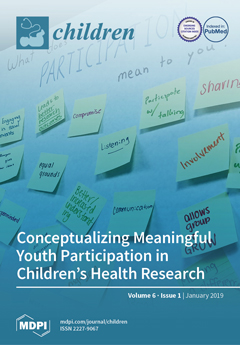This study examined the association between access to electronic devices in the home and cardiorespiratory fitness in children. Participants were children aged 8–12 years from a local elementary school (
n = 106, mean age = 9.7 + 1.1 years, male = 50).
[...] Read more.
This study examined the association between access to electronic devices in the home and cardiorespiratory fitness in children. Participants were children aged 8–12 years from a local elementary school (
n = 106, mean age = 9.7 + 1.1 years, male = 50). Child access to electronic devices was measured with a 37-item parent-reported questionnaire. Estimated maximal aerobic capacity (VO
2 Peak) was calculated from The Progressive Aerobic Cardiovascular Endurance Run (PACER) using a validated algorithm. The association between access to electronic devices in the home and cardiorespiratory fitness was explored by employing hierarchical ridge regression, using the Ordinary Least Squares (OLS) model, controlling for the covariates of sex, age, and Body Mass Index (BMI). Controlling for sex, age, and BMI, the number of electronic items in a child’s bedroom was significantly inversely related to the estimated VO
2 Peak (b = −1.30 mL/kg/min, 95% C.I.: −2.46 mL/kg/min, −0.15 mL/kg/min,
p = 0.028) and PACER laps (b = −3.70 laps, 95% C.I.: −6.97 laps, −0.41 laps,
p = 0.028) However, the total number of electronic items in the home and total number of electronic items owned did not significantly relate to the estimated VO
2 Peak (
p = 0.847, 0.964) or the number of PACER laps (
p = 0.847, 0.964). Child health behavior interventions focused on the home environment should devote specific attention to the bedroom as a primary locus of easily modifiable intervention.
Full article






